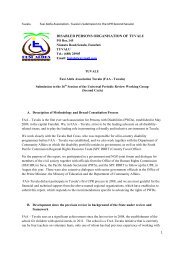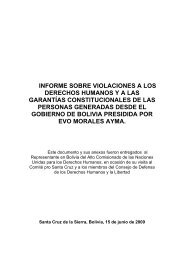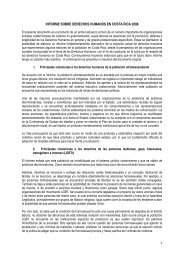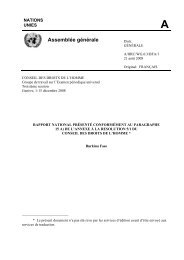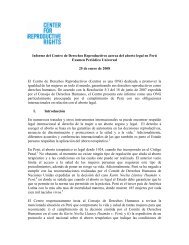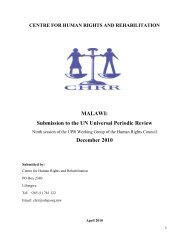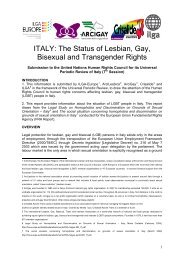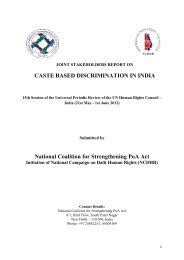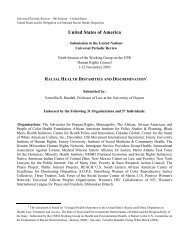Prison Needle Exchange: Lessons from a Comprehensive Review ...
Prison Needle Exchange: Lessons from a Comprehensive Review ...
Prison Needle Exchange: Lessons from a Comprehensive Review ...
You also want an ePaper? Increase the reach of your titles
YUMPU automatically turns print PDFs into web optimized ePapers that Google loves.
The study was carried out in two prisons in Germany <strong>from</strong> October 1998 to June 2001<br />
— a men’s prison and a women’s prison in Berlin. Any prisoner who had ever used<br />
illegal drugs was eligible to participate in the study. Study participants were tested for<br />
HIV, the Hepatitis B virus (HBV) and the hepatitis C virus (HCV) when they enrolled<br />
and at four-month intervals thereafter, making this one of the only studies to rigorously<br />
examine the relationship between prison needle exchange and seroconversion.<br />
<strong>Needle</strong>s were distributed by automatic dispensing machines in the women’s prison and<br />
by a non-governmental organization using hand-to-hand exchange in the men’s prison.<br />
• Of the 213 people who were incarcerated in the two prisons during the study period,<br />
174 participated in the study. Of the participants, 91 percent reported injecting in the<br />
six months prior to their enrolment. Seventy-one percent of prisoners who had previously<br />
injected in prison reported syringe sharing in prison prior to their enrolment in<br />
the study. Significantly, injection drug use during a term of imprisonment prior to the<br />
study period was found to be an independent predictor of HIV and HCV infection.<br />
• During the course of the study, 67 percent of women and 90 percent of men continued<br />
to inject, with reported injection of both heroin and cocaine. However, the authors<br />
report “an impressive reduction of syringe sharing”: syringe sharing decreased to<br />
11 percent at month four of the study, two percent at month eight, and zero percent in<br />
subsequent follow-ups. During the course of the study, no HIV or HBV seroconversions<br />
were observed. However, four out of 22 people who were HCV negative at the<br />
outset of the study seroconverted. Three of these prisoners reported sharing paraphernalia<br />
in the preparation of drugs.<br />
• There were no adverse events (e.g. overall increase in injection drug use, violence<br />
involving needles against staff or other prisoners) observed during the study period.<br />
The limitation of the study was the relatively short time during which follow-up was<br />
conducted (a median of 12 months), which did not allow the authors to assess longterm<br />
preventative effects of the needle exchange program.<br />
• In Spain, as of late 2005, needle exchange programs were operating in 38 prisons. 3<br />
• In the Republic of Moldova, it has recently been reported that the total number of<br />
syringes exchanged has grown <strong>from</strong> 3650 in 2000–2001 to 37 813 in 2003–2004 and<br />
61 433 in 2004–2005. 4 Moreover, prisons with needle exchange programs report few<br />
incidents of needle sharing. 5<br />
• Further documentation of the Kyrgyz Republic’s experience with prison needle<br />
exchange was published in 2005 6<br />
A number of evaluations of prison needle exchange programs in different countries have now<br />
been reported. The results are summarized in the table below.<br />
ii <strong>Prison</strong> <strong>Needle</strong> <strong>Exchange</strong>: <strong>Lessons</strong> <strong>from</strong> a <strong>Comprehensive</strong> <strong>Review</strong> of International Evidence and Experience



